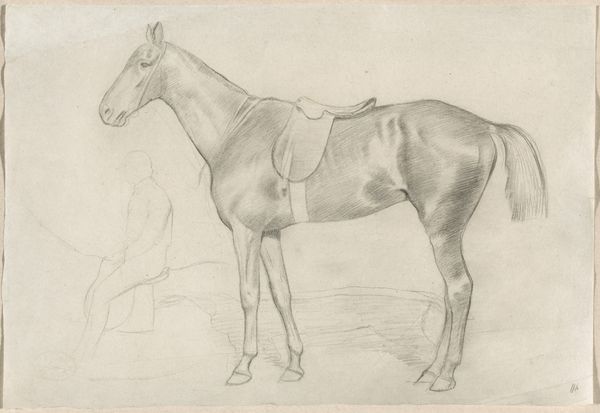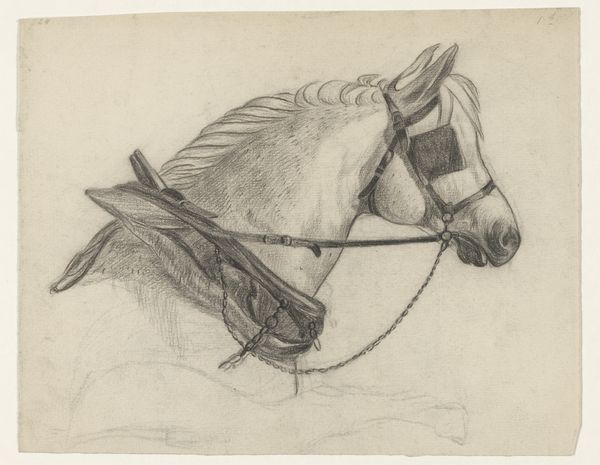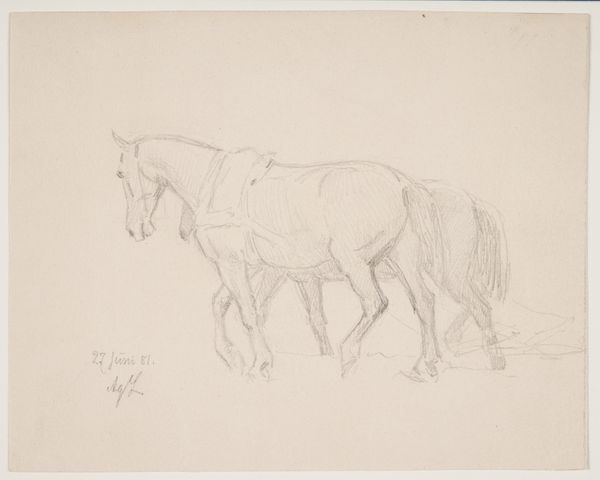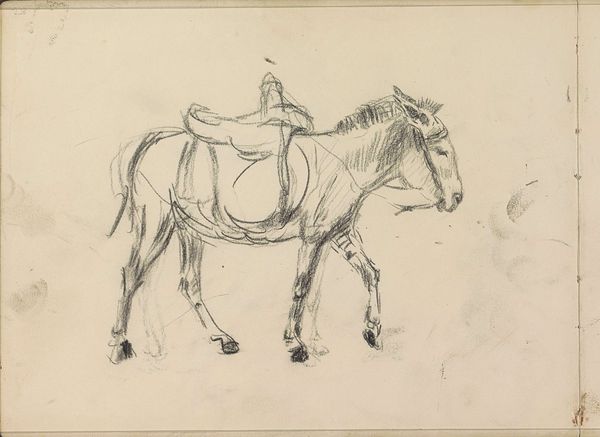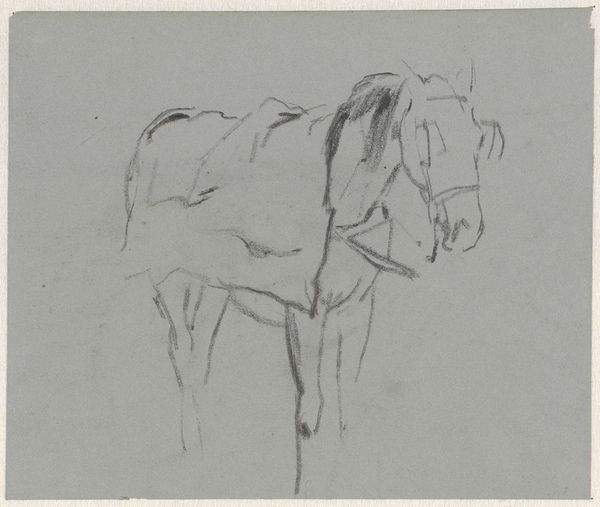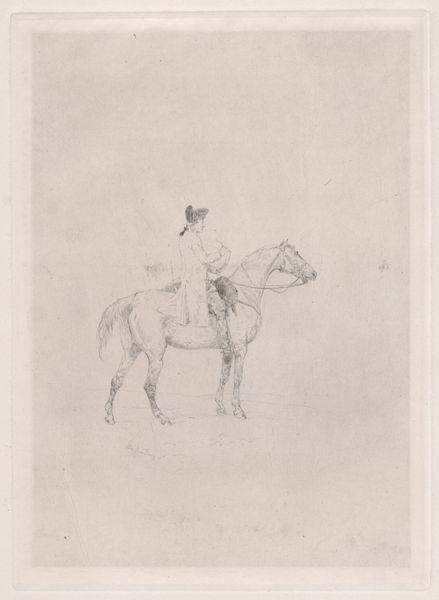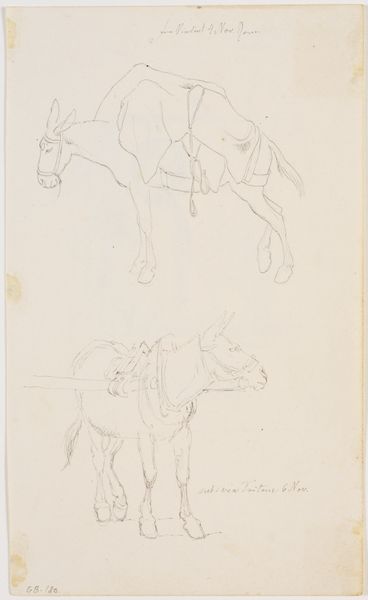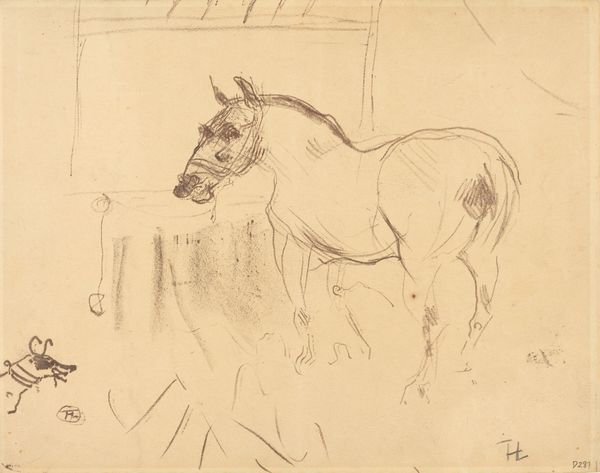
drawing, print, paper, pencil
#
portrait
#
drawing
# print
#
impressionism
#
pencil sketch
#
etching
#
paper
#
pencil drawing
#
pencil
Dimensions: 254 × 303 mm
Copyright: Public Domain
Curator: Edgar Degas, most famously known for his ballerinas, also dedicated significant time to exploring the theme of horse racing. Here's a pencil sketch, "Horse and Rider," from around 1887-1890. It resides here at the Art Institute of Chicago. Editor: It's a fascinatingly swift work, isn’t it? I can almost feel the paper’s tooth grabbing at the pencil, a deliberate roughness. The ghostly rider contrasts with the defined body of the horse, suggesting fleeting social privilege supported by real material labor. Curator: Precisely! It is almost like a ghost haunting the work of those lower than it in life, and you zero in on Degas' use of pencil. Think of it as industrial graphite meets animal and aristocratic muscle. It highlights his masterful touch with layering and shading to bring out musculature and form, but then fades almost to nothing on the jockey. Editor: I wonder what paper he used. Its grade and source would tell us so much about Degas' working method, his access, his relationship to industrial production and commerce—it really does place Degas and this scene within the networks of 19th-century commodity exchange and leisure. The pencil strokes, the hatching: It all emphasizes process as a type of labor captured in aesthetic form. Curator: I’m absolutely onboard. The hazy etching provides almost an element of movement. The energy! As an Impressionist, Degas wanted to catch that immediacy. I think he wasn’t merely representing, but actually, re-experiencing and conveying that specific moment. He wants us to understand it with him, but through feeling, a type of personal vision. Editor: It's an ambivalent feeling, though, right? There's admiration for the form and potential of labor power contained in both human and animal bodies, certainly, but is he aware of the economics of this “sport,” and of this depiction? Did he truly interrogate this relationship? It’s a picture of privilege made from base materials – which is how capitalism worked, then and now. Curator: Yes, and thank you for grounding us! "Horse and Rider" shows that Degas was definitely more than the pastel-swirling poet of ballet dancers that many assume he was. This drawing also serves as evidence of how materials themselves are deeply entwined within culture, labor, and the spirit. Editor: Exactly. Thinking about the social and material dimensions really deepens our understanding.
Comments
No comments
Be the first to comment and join the conversation on the ultimate creative platform.
